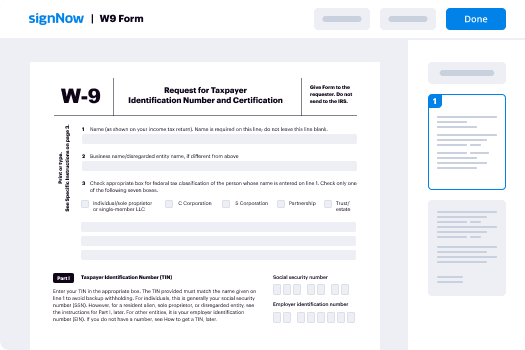FAMILY LAW INFORMATION AND INSTRUCTIONS
CONFIDENTIALITY: If you have concerns about keeping information confidential, such as
your address and/or social security number, please consult an attorney. You should also know
that Domestic Violence Protection Orders or Stalking Orders are available free of charge at the
circuit court clerks’ offices. You may request assistance in obtaining Domestic Violence
Protection or Stalking Orders from your local domestic violence or sexual assault program or
you may call the Wyoming Coalition Against Domestic Violence & Sexual Assault (1-307-755-
0992) . There are also private attorneys who may be willing to assist clients in these matters. If
you have ever obtained a Protection Order against the other party, this information should be
indicated in the Complaint for Divorce or the Counterclaim .
Read through the following information and instructions before completing the forms. You
must fill out all forms as completely as possible. If your forms are not complete, the Judge
may reject your packet.
Information :
A divorce action starts with the filing of the Complaint for Divorce . A Complaint for
Divorce is a written request to the court for a divorce. The person who originally asks for this
legal action is called the Plaintiff and remains the Plaintiff throughout the case. The Plaintiff
will file the Complaint for Divorce with the Clerk of the District Court , whose office is usually
located in the county courthouse or a branch of the county courthouse. A case number, also
called a civil action number , is assigned and an official court file is opened. Delivering the
Complaint for Divorce to the Clerk’s office is called filing a case.
Once a case has been filed, a copy must be formally given to (a/k/a served on) the
Defendant. The person against whom the original legal action is being requested is called the
Defendant , and he or she is expected to answer the Complaint for Divorce . The Defendant
remains the Defendant throughout the case. Personal service of the Complaint for Divorce and
Summons on the Defendant by a Sheriff is required for the Complaint for Divorce unless the
Defendant completes an Acknowledgment and Acceptance of Service form. Formal service is
required for the Complaint for Divorce so the Court has proof that the Defendant actually
received the papers. Other forms of service exist, but these are the easiest methods that meet the
formal service requirement for a Complaint for Divorce .
Family Law Information and Instructions
July 2014
Page 1 of 9Case Number : When you start a lawsuit by filing the paperwork with the Clerk of the District Court, a
case number will be assigned by the Clerk. You must include that case number on all further paperwork
in the “ caption. ” The caption is the top section of a pleading, motion, and complaint stating the name of
the Plaintiff, Defendant, the District Court the case is filed in and the case number.
Instructions :
STEP 1. Answer or Answer and Counterclaim.
Two options exist – you may either answer the Complaint for Divorce or answer and file a
counterclaim. Both options are explained below:
OPTION A . Answer to Complaint for Divorce . If you have been served or have
signed an Acknowledgement and Acceptance of Service form, you should file an Answer to
Complaint for Divorce with the Clerk of District Court where the Complaint for Divorce was
filed. An Answer to Complaint for Divorce is a written document explaining to the court
exactly which provisions you agree with and which provisions you deny. If you fail to answer, a
default judgment may be entered against you and your spouse may be entitled the relief he or she
asked for in the Complaint for Divorce.
You must fill in the caption. DO NOT forget to include the case number. This is located in the
caption of the Summons and/or Complaint for Divorce .
i. Admit or Deny. To answer the papers, you should go through each and every
paragraph of the Complaint for Divorce and either “admit” or “deny” each paragraph. If
you do not have sufficient information to either admit or deny a particular allegation, you
must state that in your Answer to Complaint for Divorce . If you disagree with something
and you fail to “deny” it in your Answer to Complaint for Divorce , the Judge can find that
you admitted it.
ii. Time limit to answer. You have only a limited amount of time to file an
Answer to Complaint for Divorce . Generally, if you were served within the State of
Wyoming, you will have 20 days to file the Answer to Complaint for Divorce . If you
were served outside the State of Wyoming, you generally will have 30 days to file an
Answer to Complaint for Divorce . If you do not file an Answer to Complaint for Divorce
by your deadline, then your spouse may obtain a Decree of Divorce giving him/her
everything he/she requested in the Complaint for Divorce .
iii. Computation of Time Limits . In computing most time limits, unless otherwise
stated, the day the pleading is served shall not be included. The last day of the period so
computed shall be included, unless it is a Saturday, a Sunday, or a legal holiday, or, when
the act to be done is the filing of a paper, a day on which weather or other conditions
have made the office of the clerk of the court inaccessible, in which event the period runs
until the end of the next day which is not one of the aforementioned days. When the
period of time prescribed or allowed is less than 11 days, intermediate Saturdays,
Sundays, and legal holidays shall be excluded in the computation. A "legal holiday"
includes any day officially recognized as a legal holiday in this state by designation of the
legislature or appointment as a holiday by the governor.
Family Law Information and Instructions
July 2014
Page 2 of 9
NOTE: If you have any question or concerns as to when the deadline to file the Answer to
Complaint for Divorce is, you should consult an attorney.
iv. REQUIRED INFORMATION FOR CHILDREN : Certain information is
required to be given under oath for each child, unless you have a court order or are
operating under another law allowing you to maintain confidentiality of addresses or
other identifying information. If the information is not provided, the court, upon motion
of a party or its own motion, may stop the case from going forward until the information
is provided. The information necessary is included in the Answer and the Answer and
Counterclaim .
v. Notarizing Signatures : You will need to sign the Answer to Complaint for
Divorce and have it notarized. Notarial Officers may administer the oath and witness
your signature, or in many cases, clerks of court will be willing to administer the
necessary oath. Each clerk’s office has their own policy so check with them first before
seeking notarization of your signature on the forms.
vi. Certificate of Service : Copies of all documents sent to or filed with the court
must be sent to the Plaintiff before the judge will consider them. This certificate is
included at the end of each document that requires it.
vii. Copies: Make two (2) copies of the document. The original will be filed by the
Clerk of District Court, one copy is for the Plaintiff and the other copy is for you (the
Defendant). You will need to repeat this step for all documents you file with the Clerk’s
office.
OR
OPTION B. Answer and Counterclaim for Divorce . If you want the Judge to grant
relief to you (for example, give you the divorce, award property to you, order your spouse to pay
alimony, take your previous last name back, etc.) you should file an Answer and Counterclaim
for Divorce . An Answer and Counterclaim for Divorce responds to the Complaint for Divorce
and gives you an opportunity to tell the court what you want to happen with the divorce. First,
you will go through each and every paragraph of the Complaint for Divorce and either “admit”
or “deny” each paragraph. Second, the Counterclaim for Divorce portion of the document asks
the Judge to give you what you want. You must fill out all of the information in the Answer and
Counterclaim for Divorce completely.
i Restoration of Wife’s previous name : The wife should state whether or not she
would like to resume her prior name in either the Complaint for Divorce if she is the
Plaintiff, or in a Counterclaim if she is the Defendant. This is the wife’s choice ONLY;
the husband cannot demand that his wife’s name be changed.
ii. Follow Step A(ii) through Step A(vii) above.
Family Law Information and Instructions
July 2014
Page 3 of 9
NOTE: If you have any question or concerns as to when the deadline to file the Answer
and Counterclaim for Complaint for Divorce is, you should consult an attorney.
iii. Plaintiff’s Reply to Your Counterclaim. The Plaintiff must reply to the
Counterclaim . If you file a Counterclaim , the Plaintiff will have 20 days to “reply” by filing a
Reply to Counterclaim . The Plaintiff will either admit or deny the separate allegations in your
Counterclaim. If the Plaintiff fails to reply to the Counterclaim , you may be entitled to file
Default paperwork seeking the relief you request in your Counterclaim.
STEP 2. Initial Disclosures. The law requires certain information be made
available within thirty (30) days after the Defendant is served, including a schedule of financial
assets; schedule of non-financial assets; schedule of all debts owed individually or jointly;
location(s) of safety deposit box(es); employment information; information regarding other
income and retirement accounts; and a summary of the facts believed to support the claim of
superior entitlement to custody where child custody is at issue.
A. WHEN TO SERVE : Initial Disclosures must be sent to the Plaintiff (or his/her
attorney) WITHIN 30 DAYS AFTER YOU ARE SERVED. Be sure to keep a copy of
this document for your records.
B. DO NOT FILE THE INITIAL DISCLOSURES WITH THE CLERK . This
form is only given to the Plaintiff (or his/her attorney).
STEP 3. Fill out a Confidential Financial Affidavit .
A. Fill out a Confidential Financial Affidavit and attach all required documents.
Both parties are required to file a Confidential Financial Affidavit with the court
with all the necessary supporting documentation.
Required Attachments. The Confidential Financial Affidavit must be supported
with documentation of both current and past earnings. Proper documentation of
current earnings includes, but is not limited to pay stubs, employer statements, or
receipts and expenses if self - employed. Documentation of current earnings shall
be supplemented with copies of the most recent tax return to provide verification
of earnings over a longer period. Include copies of income tax returns for the
previous two years and your most recent pay stub(s) to show how much you have
made so far this year.
The Confidential Financial Affidavit may be filed with the Clerk’s office at the
same time you file your Answer or Answer and Counterclaim.
Family Law Information and Instructions
July 2014
Page 4 of 9
STEP 4. If you and the Plaintiff agree on all of the terms in the Decree of Divorce , the
Decree will need to be filled out completely, signed by both you and the Plaintiff and both of
your signatures must be notarized. In addition to signing the Decree, you should initial each
page of the Decree to verify that each page contains the terms you agreed upon. Here is
some important information about the Decree of Divorce :
Custody and Visitation . You and the Plaintiff need to determine which custody
and visitation plan will apply in your circumstances. It is unusual for the Court
not to award any visitation or supervised visitation for the non-custodial parent.
o If there is a concern that your child(ren) may be harmed by the other
parent physically and/or emotionally, you should seek advice from
someone familiar with parenting and child development issues. There
may be an organization in your community that can help facilitate
visitation between the children and you or the other parent. You can also
contact the facilitators of any parenting classes in your community for
ideas or additional resources.
Factors to be considered for awarding custody and visitation . The Decree of
Divorce contains several options for custody and visitation arrangements. Ideally,
both parents will work together to select the proper custody and visitation plan
depending upon the family circumstances. In awarding custody and setting forth
a visitation plan, Wyoming law requires that the Court consider the following
factors:
1. The geographic location of each parent;
2. Each parent's willingness and ability to perform the child care
duties associated with the child(ren), relative to the child(ren)'s
stage of development such as feeding, changing, bathing, preparing
the child(ren) for school, taking responsibility for the child(ren)'s
homework, etc.;
3. Each parent's ability to care for the child(ren)'s needs (consider not
only historical involvement but a parent's willingness and ability to
learn the necessary skills, as well);
4. The lack of hostility between the parents;
5. The ability of both parents' work schedules and the child(ren)'s
schedule to accommodate extended access;
6. The child(ren)'s age(s) and strength of attachment to each parent;
7. The child(ren)'s relationship with his/her friends.
Child(ren)’s interests should control. The use of a calendar for scheduling
purposes is highly recommended. The parents' work schedules and the
child(ren)'s school and extracurricular activities need to be considered when
developing a visitation plan. This is especially true for those parents who do not
enjoy a traditional work week. While visitation should be an enjoyable and
Family Law Information and Instructions
July 2014
Page 5 of 9
enriching experience, it is an obligation and responsibility for each parent as well
as a right and a privilege. Both parents must also have a good faith commitment
to developing and carrying out a visitation plan. You need to focus on what type
of schedule would be in the child(ren)’s best interest.
Parenting classes . At any time the Court may require parents to attend
appropriate parenting classes, including, but not limited to, parenting classes to
lessen the effects of divorce on children. Both parents are generally required to
attend classes when they are ordered. If the class is ordered, you MUST file a
Certificate of Completion with the Clerk’s office. This certificate is provided by
the class instructor.
Child Support Payments . You will need to determine the amount of child
support due based upon the Confidential Financial Affidavits you and the Plaintiff
completed. You may use the Child Support Computation Form as a guide to
help you calculate the support due. Another option is to go online to:
http://www.laramiecounty.com/_departments/_district_court/calculator.aspx
to calculate child support.
You CANNOT agree that no support will be paid . The statutes allow
for a reduced amount of support when you agree on joint physical custody
and each parent keeps the child(ren) overnight for more than forty percent
(40%) of the year and both parents contribute substantially to the expenses
of the children in addition to the payment of child support.
Where the combined net monthly income of both parents is less than eight
hundred forty-six dollars ($846.00), the non-custodial parent has to pay
twenty-two percent (22%) of his/her net income for one (1) child and
twenty-five percent (25%) of his/her net income for two (2) or more
children, but the minimum amount of child support a person has to pay
cannot be less than fifty dollars ($50.00) per month for each family unit in
which there are children to whom the noncustodial parent owes a duty of
support.
There are NO DEVIATIONS from the presumed support allowed
UNLESS the Court CHOOSES to deviate from the set amount because the
amount was unjust or inappropriate in the particular case. The Court must
include the specific reasons for deviation in the Decree of Divorce .
NO AGREEMENTS FOR LESS THAN THE PRESUMED
SUPPORT CAN BE APPROVED IF GOVERNMENT OR STATE
BENEFITS (SUCH AS MEDICAID (TITLE 19), FOOD STAMPS,
POWER, ETC.) ARE BEING PROVIDED ON BEHALF OF ANY
Family Law Information and Instructions
July 2014
Page 6 of 9
CHILD. This means the Court cannot lower the amount of child support
calculated by using the net income of you and the Plaintiff even if you and
the Plaintiff agree to a lower amount of support.
Medical Support . The law requires that m edical support for the child(ren) be
included as part of any child support order. T he Court shall order either or both
of the parents to provide medical support, if insurance can be obtained at a
reasonable cost and the benefits under the insurance policy are accessible to the
children. This may include dental, optical or other health care needs for the
child(ren). In addition, the Court will order that any medical expenses not
covered by insurance and any deductible amount on the required insurance
coverage be paid by one or both parents. If both parents are ordered to pay for
expenses not covered by insurance, the Court will specify the proportion for
which each parent is responsible (for example, 50% to Plaintiff and 50% to
Defendant).
When will your divorce become final ? Your divorce will not be final until the
judge signs the Decree of Divorce and it is filed with the Clerk of Court. This process may take
time if the Judge requires changes to the proposed Decree . You must verify with the Clerk’s
office that the Decree of Divorce has been file-stamped before you can be sure your divorce is
final. The time limit to appeal a decree begins to run from the day the Decree of Divorce is filed
with the Clerk’s office.
STEP 5. If you and the Plaintiff do NOT agree on all issues of your
divorce, you will need to have a trial :
A. Trial . If you and the Plaintiff cannot agree on all issues, your case will have to be
heard and decided by a Judge at a trial.
Caution : It is strongly recommended that you hire or find an attorney to
represent you at trial, though you may represent yourself. You proceed at
your own risk and will be expected to know the laws.
B. Request a trial date. If the Plaintiff has NOT done so, you will need to request a
hearing by completing a Request for Setting . Write in “trial” where it asks the type of hearing.
Indicate how much time you think it will take for you and the other party to present your
evidence and write that in (usually one (1) to three (3) hours). You also need to decide whether
or not you want a Court reporter to record the proceeding. SEE BELOW FOR DETAILS ON
GETTING A COURT REPORTER. If a hearing is not recorded by an official court reporter, a
transcript of the hearing will not be available. It is very difficult to appeal the Judge’s decision if
you do not get a Court reporter to take down everything that is said at the trial.
You must file the Request for Setting and the Order Setting Divorce Trial and
Requesting Pretrial Statements with the Clerk’s office, and the Court will fill in the
Family Law Information and Instructions
July 2014
Page 7 of 9
hearing date and time and mail a copy to you and the other party. You will need to
provide an addressed, stamped envelope for you and the Plaintiff to the Clerk.
Once a trial date has been set, do the following:
C. Pretrial Disclosures . - Both parties must provide to the other party AND
PROMPTLY FILE WITH THE COURT the Pretrial Disclosures regarding the evidence that it
may present at trial. If you have questions, you should contact an attorney.
When are the Pretrial Disclosures due? Unless otherwise directed by the
Court, these disclosures must be made at least 30 days before trial .
Take the original and two (2) copies to the Clerk for filing. Keep one copy for
your records and send the other copy to the Plaintiff (or his/her attorney).
Settlement before trial. In the event that your case settles before the trial, you
must present the Court with the completed and signed Decree of Divorce in writing before the
Court will take the trial off of the schedule. There will be no continuances or canceling of the
trial date based on telephone calls. If you need a continuance, you should contact an attorney
for assistance in seeking one.
Court reporter. If you wish to have a Court reporter you are required to provide
notice to the official Court reporter as soon as possible, but at least three (3) working days
before the matter is set for hearing. You can provide notice to the court reporter by phone or by
submitting a written request. Please note that if providing notice through the mail, the request
must be received by the court reporter at least three working days prior to the hearing. The Clerk
will be able to inform you which court reporter to contact. The three-day notice requirement will
not be waived by the Court. The notice is required for all civil matters including jury trials.
Evidence and witnesses. At the hearing, you will need to present your evidence
and witnesses. If the Order Setting Divorce Trial and Requesting Pretrial Statements is entered
(signed by the Judge), you must follow the terms and provide the Court with the information
requested in that document, including copies of exhibits you want to introduce at the trial and a
list of your proposed witnesses and what their testimony is going to be about within the time
frame ordered (usually 3 to 5 days prior to the trial). Under the law, the Judge cannot help you
or assist you at trial. You are on your own without an attorney.
Final Decision ( Decree of Divorce ). Following the trial, the Judge will make a
decision or may take the matter under advisement, meaning he or she will need to think further
before making a determination. If the Judge instructs you, you must take that decision and type
it into the Decree of Divorce incorporating the Judge’s decision.
You are again reminded that, if you choose to continue without an attorney,
you are expected to know what to do and how to do it. The judge will not
Family Law Information and Instructions
July 2014
Page 8 of 9
guide you through the trial/hearing, tell you how to proceed or advise you on
the law.
When will your divorce become final ? Your divorce will not be final until the
judge signs the Decree of Divorce and it is filed with the Clerk of Court. This process may take
time if changes to the proposed Decree are required by the Judge. You must verify with the
Clerk’s office that the Decree of Divorce has been file-stamped before you can be sure your
divorce is final. The time limit to appeal a decree begins to run from the day the Decree of
Divorce is filed with the Clerk’s office.
RECAP for Defendant’s Documents :
1. File an Answer or Answer and Counterclaim within 20 days from the date you were served (or 30
days if served out of state)
Mail a copy to the Plaintiff and keep a copy for your records
2. File a Confidential Financial Affidavit and the required attachments
Mail a copy to the Plaintiff and keep a copy for your records
3. Assist the Plaintiff in filling out the Decree of Divorce if you both agree on all of the terms.
Sign the Decree of Divorce in front of a notarial officer.
4. If you and the Plaintiff do NOT agree on all of the terms, and a trial is needed, follow these steps:
a. File a Request for Setting and Order Setting Divorce Trial and Requiring Pretrial
Statements ONLY if the Plaintiff has NOT done so.
b. Take an original and two (2) copies of the Order Setting Divorce Trial and Requiring
Pretrial Statements for filing with the Clerk and two (2) addressed, stamped envelopes
(one addressed to you and one to the Plaintiff with enough postage to cover the cost of
mailing the Order Setting Divorce Trial and Requiring Pretrial Statements to you and the
Plaintiff).
c. File your Pretrial Disclosures 30 days before the trial date.
Mail a copy to the Plaintiff and keep a copy for your records (do not file with the
Court)
d. No later than 3 working days before the trial, request a court reporter, if desired (and if
the Plaintiff has not already done so)
e. Attend the Trial
f. Complete and file any additional documents required by your Court.
Your divorce is final when the Decree of Divorce has been signed by the Judge and filed by the Clerk.
Family Law Information and Instructions
July 2014
Page 9 of 9
















